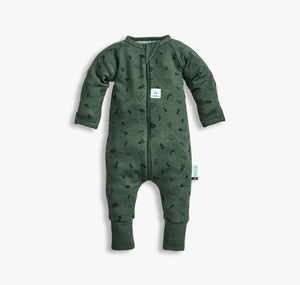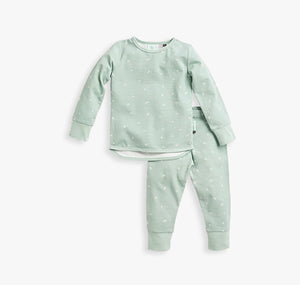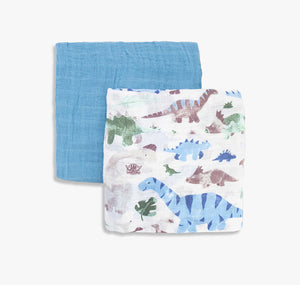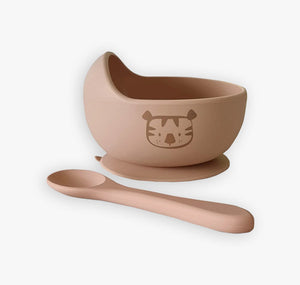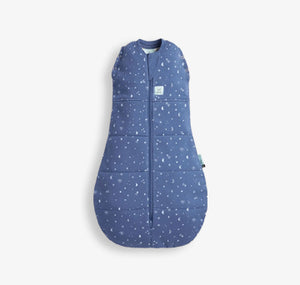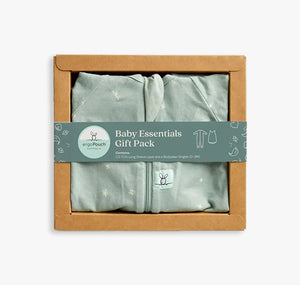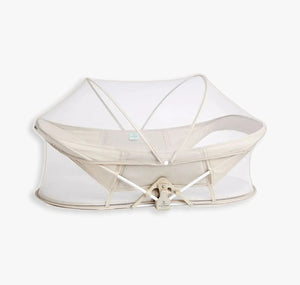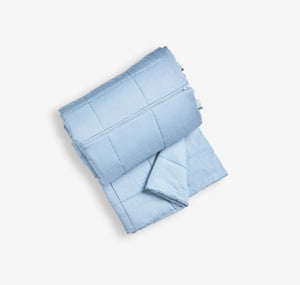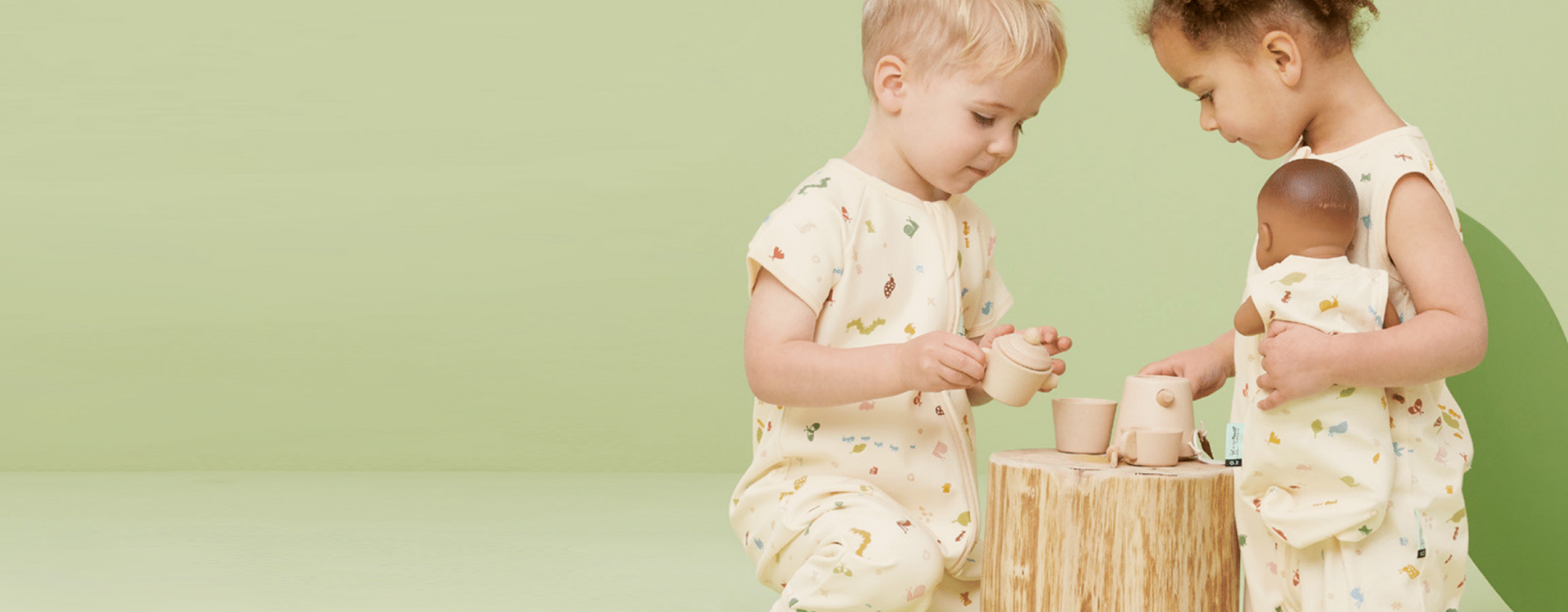

The Ultimate Guide to Swaddling
Featured posts
Lastest posts
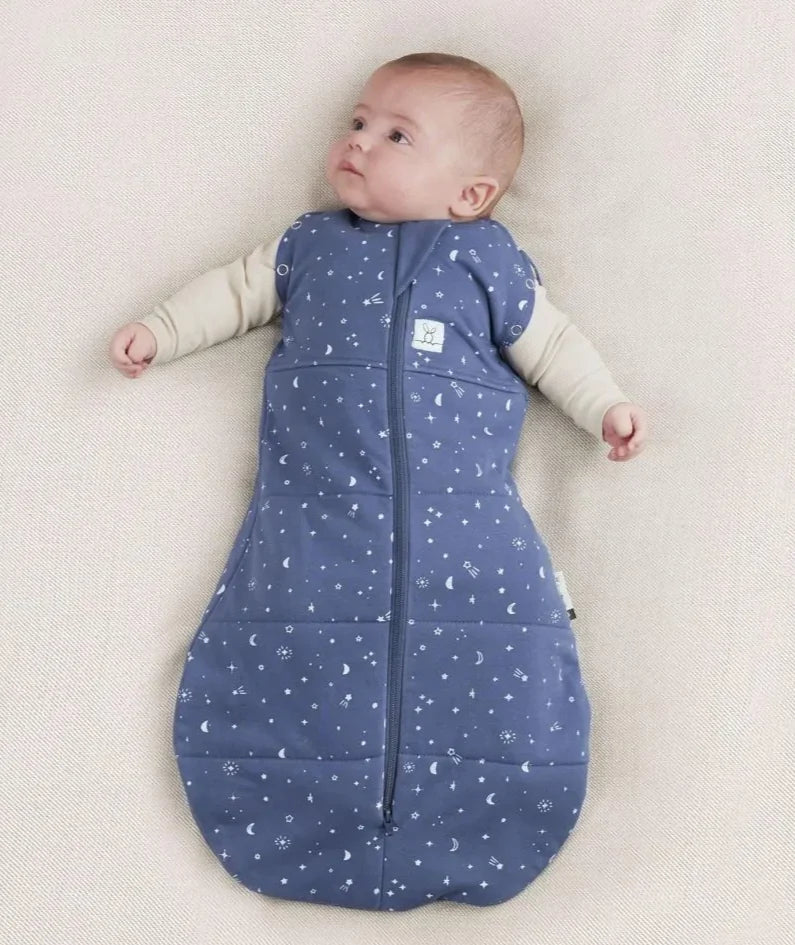
Swaddling is an age-old practice used for centuries to soothe and comfort newborns. The method involves wrapping a baby snugly in a blanket or other soft material to mimic the feeling of being in the womb. Swaddling can help babies feel more secure and sleep more soundly, but it's essential to do it correctly to ensure your baby's safety.
Several different types of swaddles are available on the market today, each with unique features and benefits. However, the most common types of swaddles include traditional swaddles, Velcro swaddles, and stretchy swaddles.
Traditional swaddles are made from a rectangular fabric, such as a receiving blanket or muslin. They are wrapped around the baby and tucked in securely to keep the baby feeling snug and secure. Traditional swaddles are versatile and can be used in various ways, making them a great option for many parents.
Velcro swaddles are similar to traditional swaddles, but they feature a Velcro fastener that allows you to adjust the fit of the swaddle. This can be especially helpful for new parents, as it can be difficult to get the right amount of tension with a traditional swaddle. Velcro swaddles also tend to stay in place better than conventional swaddles, which can be especially helpful for wiggly babies.
Stretchy swaddles are made from a stretchy material, such as cotton or bamboo, and are designed to be wrapped tightly around the baby. These swaddles are often used for premature babies or babies with special needs, as they provide greater support and security. Stretchy swaddles can also be helpful for parents who are new to swaddling, as they are often easier to use than traditional or Velcro swaddles.
When choosing a swaddle, it's essential to consider the material. Cotton is a popular choice for swaddles as it is soft, breathable, and hypoallergenic. Muslin is also a great option as it is lightweight, breathable, and gentle on a baby's delicate skin. Bamboo is another popular option as it is soft, breathable, and naturally antimicrobial. Avoid using synthetic materials, such as polyester or nylon, as they can trap heat and can make your baby too warm.
When it comes to swaddling, the key is ensuring that the baby is wrapped snugly enough to feel secure, but not so tightly that they can't move their arms and legs freely. It's also important to make sure that the swaddle is not too loose, as this can increase the risk of the baby wriggling out of the swaddle and getting tangled up in the blanket.
To swaddle your baby:
- Start by laying the swaddle blanket on a flat surface with one corner pointing towards you.
- Fold the top corner down to create a triangle.
- Place your baby on the blanket with the head just above the folded corner, leaving enough room for the face to be visible.
- Take the left corner of the blanket and bring it across your baby's body, tucking it under their right arm.
- Take the right corner of the blanket and bring it across your baby's body, tucking it under their left arm.
- Take the bottom corner of the blanket and bring it up over your baby's feet, tucking it in securely.
It's important to remember that babies grow quickly, so it's important to check the fit of the swaddle regularly. If the swaddle is too tight, the baby's hips and legs may not be able to move freely, which can lead to developmental issues. If the swaddle is too loose, the baby may be able to wriggle out of it and become tangled up in the blanket. Always check the fit of the swaddle and adjust it as needed to ensure that your baby is safe and comfortable.
Another important factor to consider when swaddling is the age of your baby. The American Academy of Pediatrics recommends that parents stop swaddling their babies at around 2-3 months of age or as soon as the baby starts to roll over. This is because swaddling can restrict a baby's movement and make it difficult for them to roll over, which is an important developmental milestone.
It's also important to note that not all babies like to be swaddled. Some babies prefer to be left free to move their arms and legs, while others may find the feeling of being wrapped up to be comforting. If your baby doesn't seem to like being swaddled, don't force it. Instead, try using a different type of sleep aid, such as a pacifier or a white noise machine.
In conclusion, swaddling can be a great way to soothe and comfort newborns. It can help babies feel more secure and sleep more soundly, but it's important to do it correctly in order to ensure the safety of your baby. There are several different types of swaddles available on the market today, each with their own unique features and benefits. Consider the material, fit and age of your baby when choosing a swaddle. Always check the swaddle's fit regularly and stop swaddling your baby when they start to roll over.
T you for taking the time to read about Kids Wagon's range of swaddles! We understand the importance of comfort and security for your little one, and that's why our swaddles are designed to grow with your baby through every stage of their development. Whether you're looking for a cosy wrap for a newborn or a larger size for an active toddler, we have the perfect solution. So, why not give your baby the gift of a good night's sleep, and check out our full range of swaddles today!

As a new parent, one of the most important decisions you will make for your baby is what they wear to bed. Not only is it important for your baby to be comfortable, but it’s also important to keep them warm and safe as they sleep. The Tog Rating is a crucial factor in choosing the right sleepwear for your baby, and in this guide, we’ll explain everything you need to know about it.
What is a Tog Rating?
Tog Rating is a measurement of thermal insulation, which refers to how warm a material will keep your baby. The higher the Tog Rating, the warmer the material will keep your baby. When choosing sleepwear for your baby, it’s important to consider the Tog Rating to ensure that they are not too hot or too cold.
What is Tog Rating appropriate for different seasons?
- Summer: 0.5 Tog or lower
- Spring/Autumn: 1.0 Tog
- Winter: 2.5 Tog or higher
It’s important to note that these are just guidelines and that your baby’s room temperature, as well as your baby’s own body temperature, can affect the Tog Rating you choose.
What should my baby wear to bed?
When choosing sleepwear for your baby, it’s important to consider the Tog Rating, as well as the type of material. Natural materials, such as cotton and bamboo, are breathable and soft, making them ideal for sleepwear. Synthetic materials, such as polyester, are not as breathable and can cause your baby to become too hot.
It’s also important to consider the size of the sleepwear. Loose-fitting sleepwear is best as it allows air to circulate, keeping your baby cool and comfortable. Tight-fitting sleepwear can restrict movement and cause your baby to become too hot.
Here’s a table that summarizes the key factors to consider when choosing sleepwear for your baby:
| Factor | Description |
|---|---|
| Tog Rating | A measurement of thermal insulation, which refers to how warm a material will keep your baby |
| Material | Natural materials, such as cotton and bamboo, are breathable and soft, making them ideal for sleepwear |
| Fit | Loose-fitting sleepwear is best as it allows air to circulate, keeping your baby cool and comfortable |
Conclusion
Choosing the right sleepwear for your baby is an important decision that can have a big impact on their comfort and safety. By understanding Tog Ratings and considering the key factors when choosing sleepwear, you can ensure that your baby has a comfortable and safe sleep.
At Kids Bandwagon, we’re passionate about helping mums, dads, little ones, and mums-to-be find their way through every life stage, from pregnancy and babyhood to preschool and beyond. Our original products transform family life, whether it’s maternity, sleeping, or feeding. Our collection has something for every budget and style!
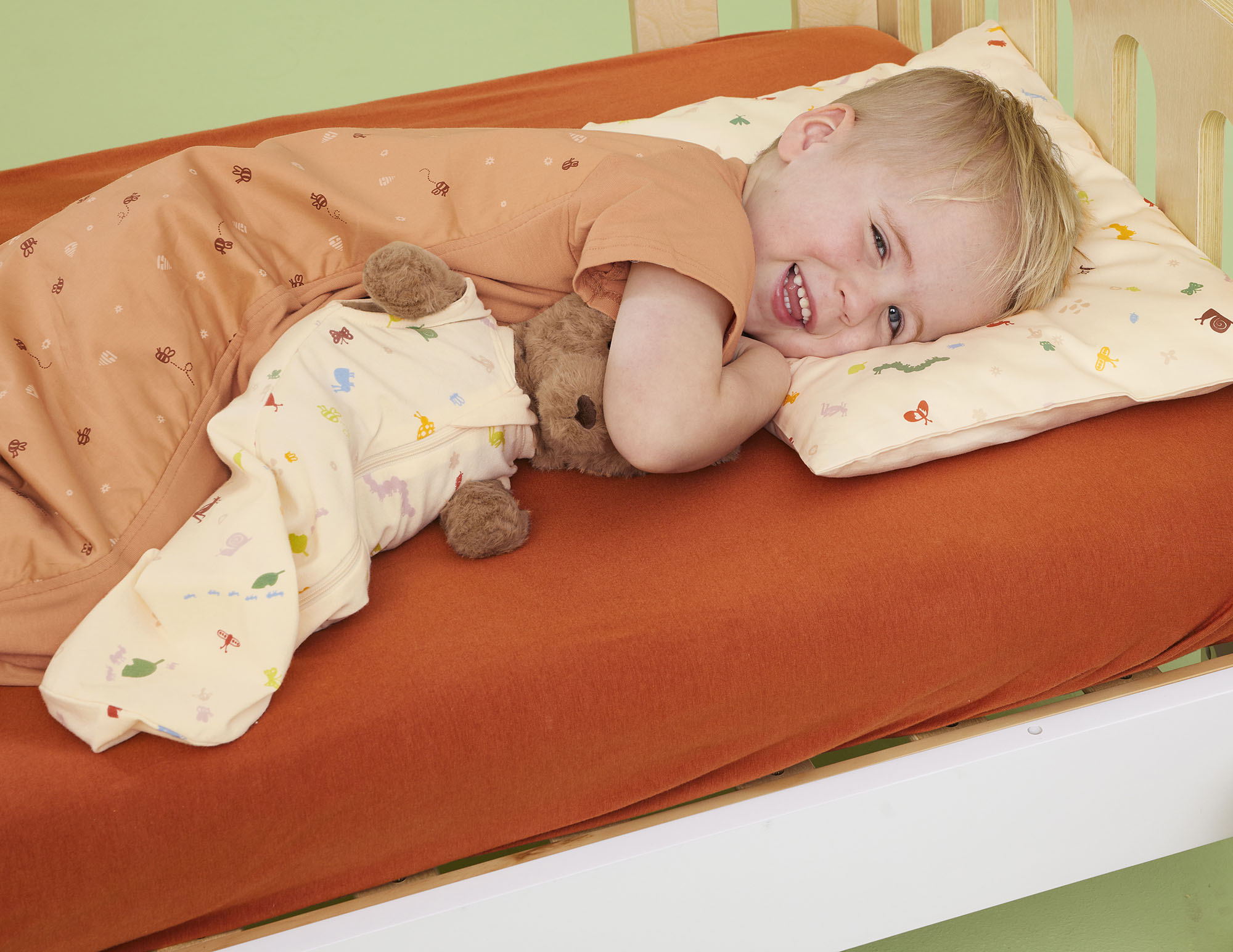
As parents, we always want the best for our children, especially regarding their health and comfort. However, one of the critical factors that can affect our toddler's sleep quality is the type of pillow they use. Choosing the right toddler pillow is crucial as it can help ensure a comfortable and restful sleep, which is essential for their growth and development. In this article, we'll provide tips on choosing the best pillow for your toddler.
Consider the Age of Your Toddler
https://www.kidsbandwagon.com.au/collections/toddler-pillows
The first thing to consider when selecting a pillow for your toddler is their age. Toddlers under two should not use pillows, as they can pose a risk of suffocation. For children aged 2-4, a thin, flat pillow is recommended, as it provides enough support for their head and neck without elevating it too much. Children aged four and above can use a standard-sized pillow, but it should still be on the firmer side to provide adequate support.
Choose the Right Material
Another important factor to consider when choosing a pillow for your toddler is the material. Synthetic materials, such as polyester or foam, can be a good choice as they are hypoallergenic and provide good support. Natural materials like down or feather pillows may not suit young children, as they can cause allergies or breathing problems. It's also a good idea to opt for pillows made of organic cotton, as they are free of harmful chemicals and are safer for your child.
Assess Your Toddler's Sleeping Position
The sleeping position of your toddler is another important factor to consider when selecting a pillow. For example, if your child sleeps on their back, a thinner pillow may be more suitable, while a thicker pillow may be needed for side sleepers. Stomach sleepers should avoid using pillows altogether, as they can put undue strain on the neck and back.
Firmness Level
The firmness level of the pillow is also crucial for your toddler's comfort and support. A pillow that is too soft can cause your child's head to sink in, leading to poor spinal alignment and potential discomfort. On the other hand, a pillow that is too firm can be uncomfortable and cause stiffness or pain. Therefore, the best pillow for your toddler is one that strikes a balance between softness and firmness, providing support without being too hard.
Look for Breathable Pillows
Breathability is another important factor to consider when selecting a pillow for your toddler. A breathable pillow allows air to flow through it, reducing the risk of overheating and promoting a comfortable sleep environment. Look for pillows made of breathable materials such as cotton, bamboo, or wool.
Organic Cotton Pillows
Organic cotton pillows are a great option for parents who are concerned about the use of synthetic materials and chemicals in their children's bedding. These pillows are made from organic cotton, which is grown without the use of pesticides or synthetic fertilizers. As a result, they are free of harmful chemicals and are a safer and healthier choice for your toddler. Organic cotton pillows are also breathable and hypoallergenic, making them a great option for children with allergies or sensitivities. However, it's important to note that organic cotton pillows can be more expensive than synthetic options, so parents should weigh the benefits against the cost before making a purchase.
Check for Washability
Lastly, it's important to choose a pillow that is easy to clean and maintain. Toddlers can be messy, so you'll want a pillow that is machine-washable and can be easily cleaned. Make sure to check the care instructions before purchasing a pillow, and look for one that is easy to clean and maintain.
Choosing the right pillow for your toddler is essential for their comfort and overall health. When selecting a pillow, consider your toddler's age, sleeping position, and material preferences. Look for a pillow that strikes a balance between softness and firmness, is breathable and easy to clean. By following these tips, you can ensure that your toddler gets the best possible sleep and feels rested and refreshed.
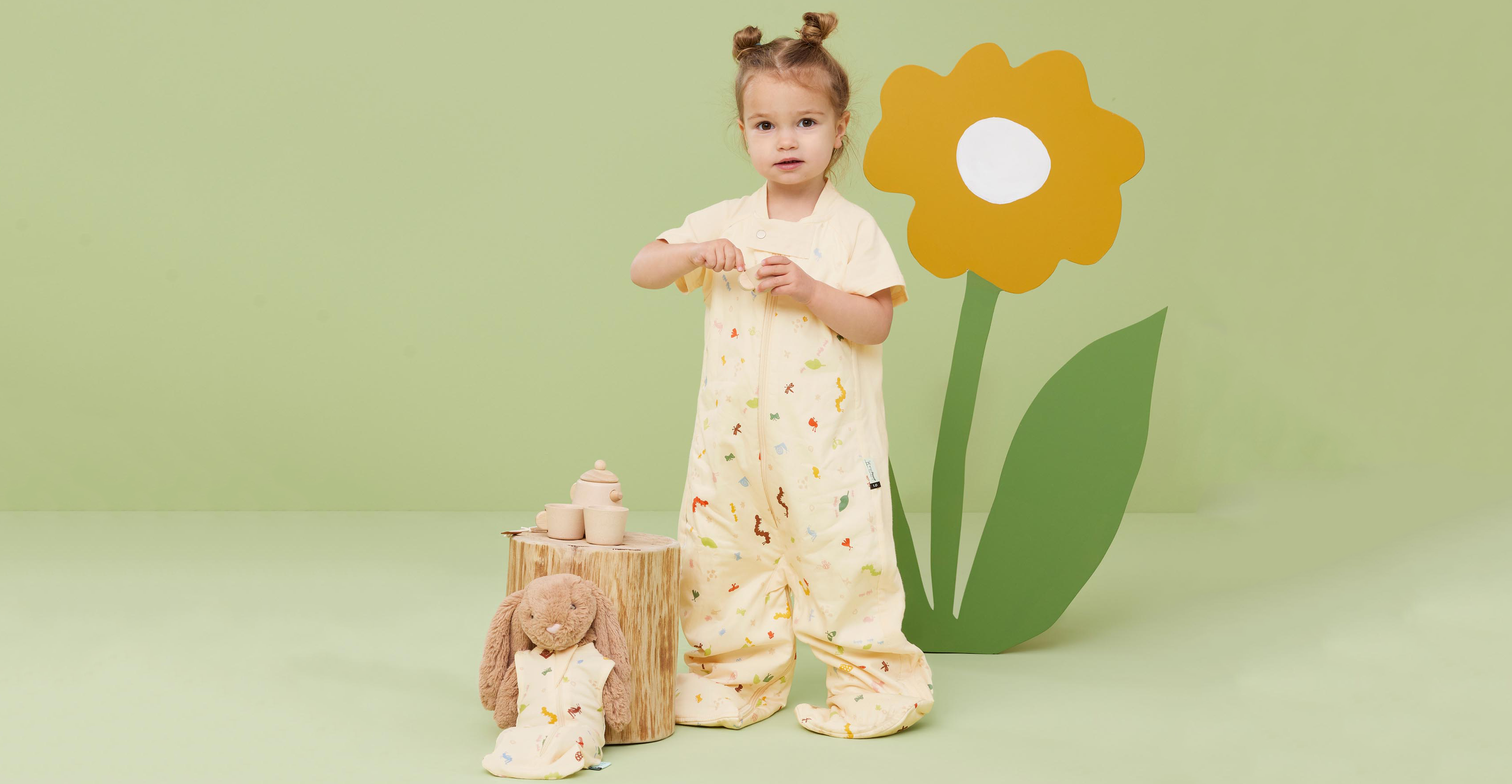
As a parent, one of the most crucial decisions you will make for your toddler is choosing the right sleepwear. Toddlers need comfortable and safe sleeping conditions to promote healthy growth and development. Sleepsuit bags and sleeping bags are popular sleepwear options for toddlers, as they provide a comfortable and cosy sleeping environment. In this article, we'll provide tips on choosing the best sleep suit bags and sleeping bags for your toddler.
Consider the Age of Your Toddler The first thing to consider when selecting sleepwear for your toddler is their age. A sleep suit bag is recommended for infants, as it provides a secure and comfortable sleeping environment. Toddlers aged 2-3 can transition to sleeping bags, which offer more room for movement. Children aged 4 and above can use regular bedding, such as sheets and blankets. Choosing the sleepwear that suits your toddler's age is essential to promote a safe and comfortable sleep environment.
Choose the Right Material Another important factor to consider when choosing sleepwear for your toddler is the material. Natural materials such as cotton and bamboo are good choices, as they are breathable and gentle on the skin. Synthetic materials such as polyester should be avoided, as they can cause skin irritation and overheating. It's also a good idea to look for sleepwear made from organic materials, as they are free of harmful chemicals and safer for your child.
Assess the Sleepwear's TOG Rating The TOG rating is a measure of thermal insulation, indicating the sleepwear's warmth. When selecting sleepwear for your toddler, it's important to consider the TOG rating to ensure that they are not too hot or too cold during the night. For example, a TOG rating of 0.5-1.0 is suitable for summer months, while a rating of 2.5-3.5 is ideal for winter. Choosing sleepwear with the appropriate TOG rating is important to promote a comfortable and safe sleep environment.
Ease of Use and Safety Sleepwear should be easy to use and safe for your child. Sleepsuit bags and sleeping bags with zippers or buttons should have safety features to prevent your child from getting tangled or trapped. Choosing sleepwear that is easy to put on and take off is important, as this makes it more convenient for parents and caregivers. Additionally, it's important to check the sleepwear for any loose strings or tags that can pose a choking hazard to your child.
Consider Your Toddler's Sleeping Habits Your toddler's sleeping habits should also be considered when choosing sleepwear. A sleeping bag with ample room for movement is recommended if your child tends to move around a lot during the night. If your child is a light sleeper, a sleep suit bag that provides a snug fit can help them feel more secure and promote a night of more restful sleep.
Choosing the right sleepwear for your toddler is essential for their comfort and overall health. When selecting sleep suit bags and sleeping bags, consider your toddler's age, material preferences, TOG rating, ease of use, safety, and sleeping habits. In addition, look for sleepwear made from natural, organic materials and with appropriate TOG ratings. Following these tips ensures that your toddler gets the best possible sleep and feels rested and refreshed.
